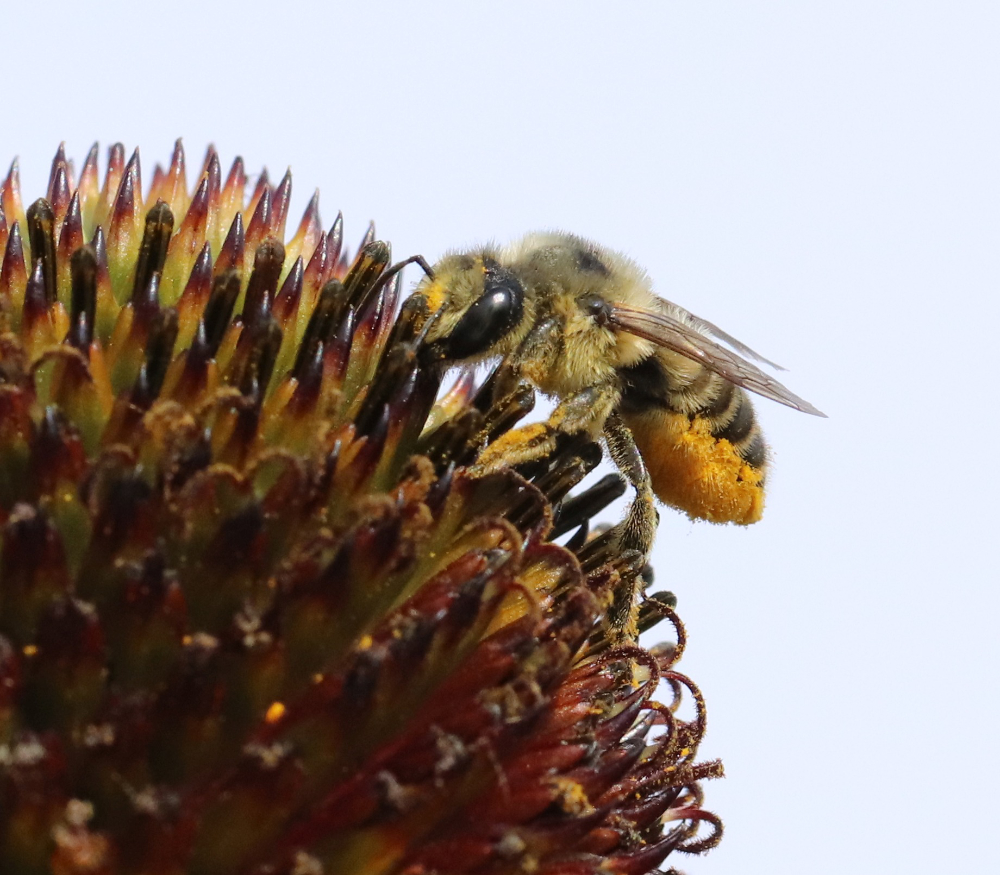
See the pollen on the underside of my abdomen (belly)? That’s where I store it, not on my hind legs like most other bees (think about honey bees and bumblebees with their hind leg pollen baskets).
Hi, you can call me Meg
short for Megachile. Say it with me: meg-uh-ki-lee. In the previous picture, I was drinking nectar and gathering pollen from Echinacea paradoxa, or yellow coneflower.
I’m part of the third-largest bee family, the Megachilidae. We are an attractive bunch with blue, copper and green jewels (Osmia, with 23 species abundant in SW Ontario), burly black-and-yellow-striped Anthidium (1 species common in our urban environments), and me, a member of the chunky, hairy Megachile (18 species that are abundant in SW Ontario), to name just a few. What unites us all is that the non-parasitic females carry pollen on our abdomen undersides.
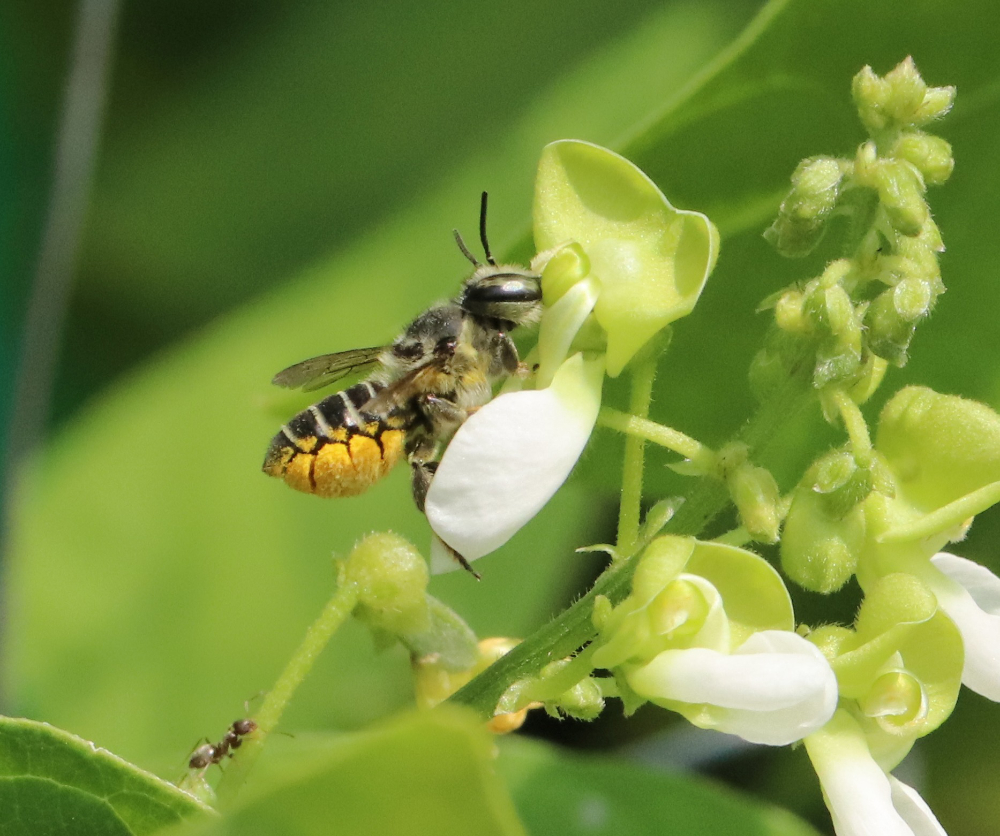
Megachile in bean flowers. See how she’s flexing her abdomen upwards? She had a unique buzz that, once heard, is unmistakable.
Have you seen me and my other 17 species around? You might know us as leafcutter bees but you don’t need to see us cutting leaves to identify us. As if we are showing-off our yoga skills, we love to flex our abdomens upwards while landed. And like that friend whose voice you can pick out of a noisy room, we make a distinctive high-pitched buzzing sound while foraging. Our matte black bodies are fairly hairy with white stripes of hair on our abdomen. Male Megachile are absolute bee beasts, with their front legs covered in long tufts of hair and spines and many males sport horns on their bodies too.

Male Megachile on Echinacea paradoxa flower. Notice his very hairy front legs.
I’m absolutely adorable: chunky, hairy body with pollen on my belly. You want me and my Megachilidae friends in your garden. So, let’s talk about what we need.
1. Somewhere to live please, usually that’s above-ground: We have varied nesting approaches:
• Excavators need pithy stems from last year’s cuttings, like raspberry canes, or soft, rotten wood
• Squatters (or more nicely, “renters”) will live in any premade tunnel of the preferred diameter, like an old snail shell, between stones, or old beetle burrows in dead wood.
Leaving some pithy stems and old wood will tick most boxes for nesting. Because we carry pollen on our abdomen, we carry less per trip than other bees. We make shorter, more rapid trips, so having our nest close to the flowers is critical. Like most native bees, we are solitary, although I might build a nest near other females of the same species for company. If we’ve done that, then you’ll see the spiny, hairy males hovering over our nests to wait for us to emerge. Cleverly, I can find my nest entrance apart from my female neighbours by marking it with my own unique scent.
2. Leaves for wallpapering our houses: We use our giant mouthparts (called mandibles) to cut circles of leaves and petals to line our nest tunnels. Once cut, we chew the edges of the circles to make them gummy, then we stick them together to wallpaper our nests.Next, we fill the leafy cup with pollen, lay an egg on the mass and weave the leaves to seal it all up. Talented, eh? Creating the nest takes several hours on top of the more than 1000 flowers we must visit to gather pollen for each egg. We seem to love rose, lilac, grey dogwood, red oak and redbud leaves (judging by these human observations on iNaturalist).
3. Things to eat: Our flower preferences range from very specialized to very general, but most of us are generalists. Some of us have hooked hairs on our faces to effectively pick up pollen, letting us get into narrow flowers that can’t be accessed with our legs. We seem to prefer Aster family members: Solidago, Eriginon, Bidens, Coreopsis, Rudbeckia, Silphium, Helianthus, Verbesina, and Symphyotrichum. Give us any plant with an open flower structure (no long tubes or complicated petals) that makes abundant pollen and nectar to please a generalist.
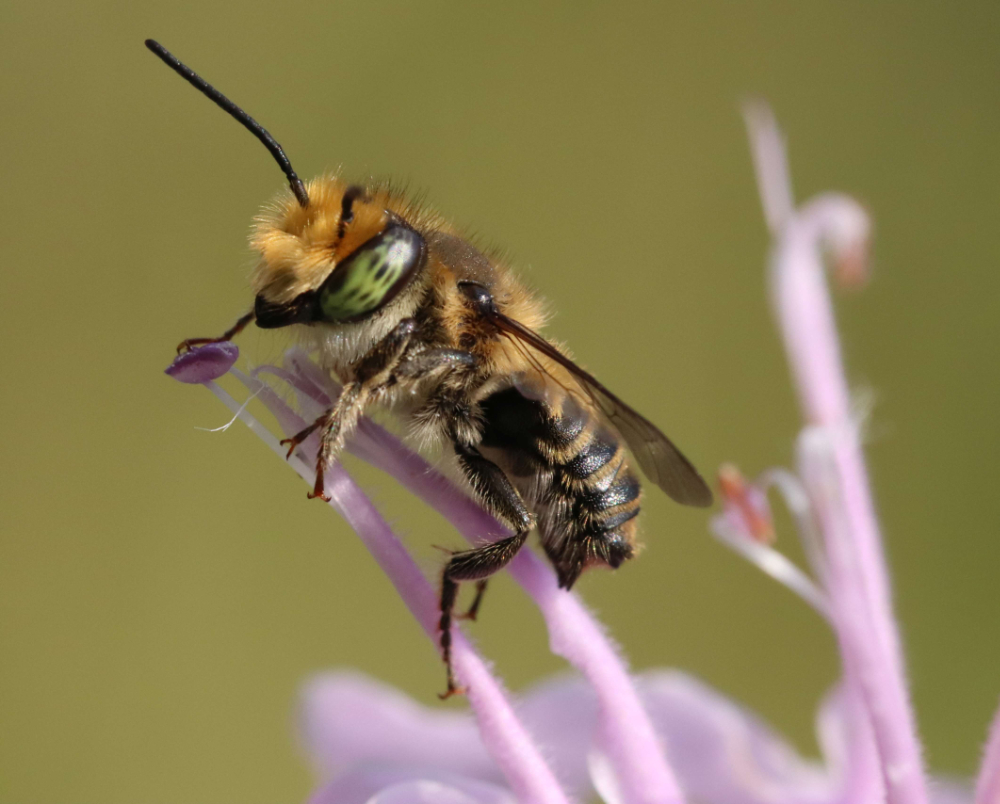
Stunning Megachile on Monarda.
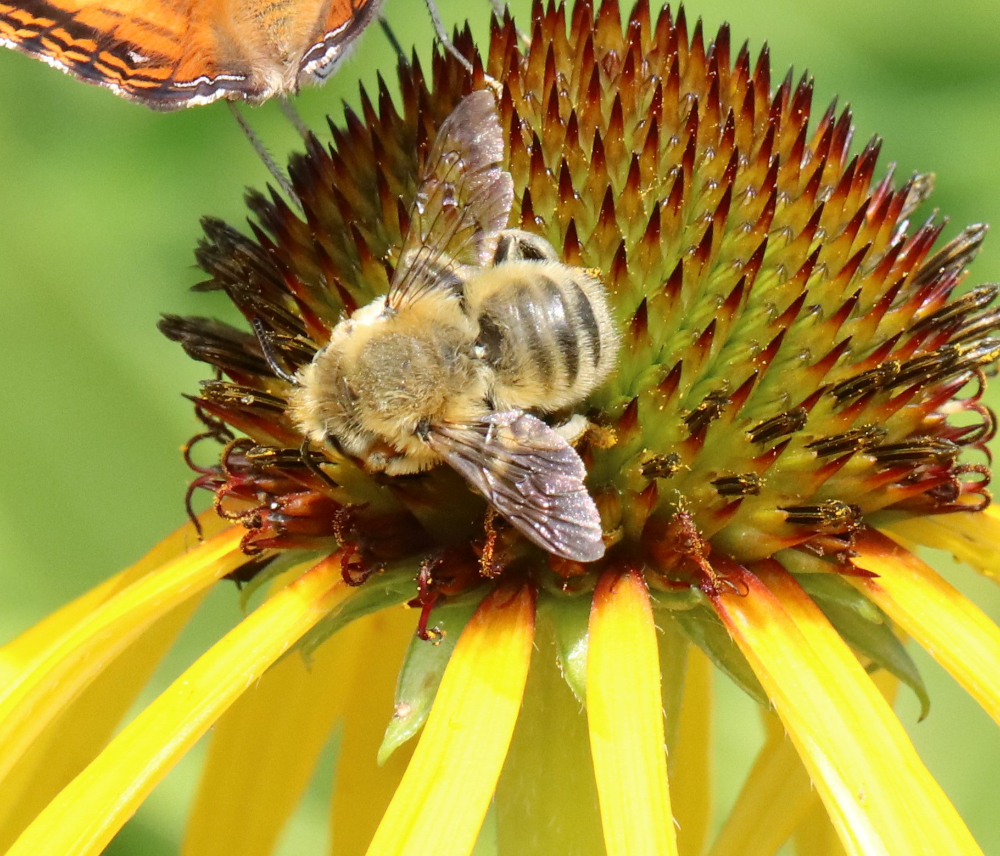
Burly bodies of Megachile make them look like flying submarines! Shown on Echinacea paradoxa flower.
Hope to see you soon!
Click here for a printable version
References:
Danforth, B. N., Minckley, R. L., John Lewis Neff, & Fawcett, F. (2019). The solitary bees : biology, evolution, conservation. Princeton University Press
Fowler, J, S. Droege. Pollen Specialist Bees of the Eastern United States. (2020)
Packer, L., J.A. Genaro, C.S. Sheffield. The Bee Genera of Eastern Canada. Can J of Arthropod Id. (2007)..
Wilson, J. S., & Olivia Messinger Carril. (2016). The bees in your backyard : a guide to North America’s bees. Princeton University Press, Boston, Massachusetts.


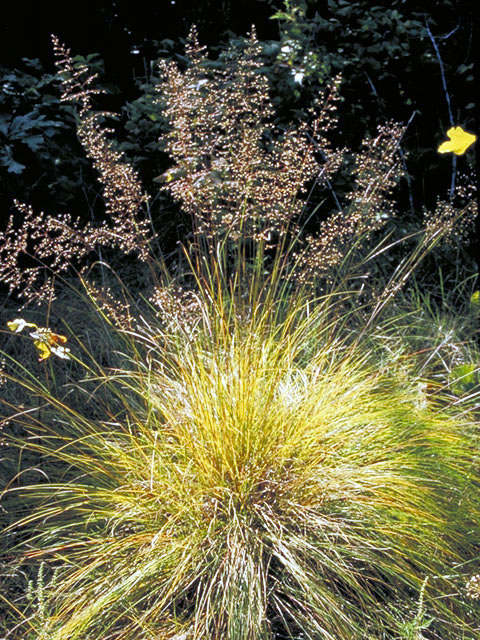
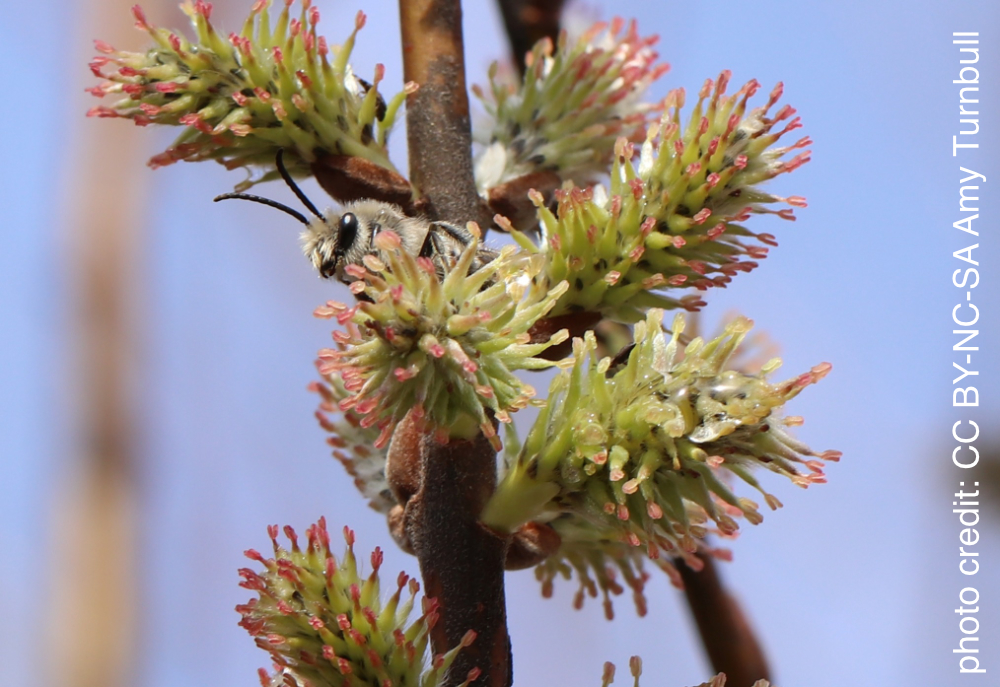

About The Author: Amy Turnbull
Scientist, researcher and professor at Fanshawe College. Avid grower of edibles in her home garden.
More posts by Amy Turnbull